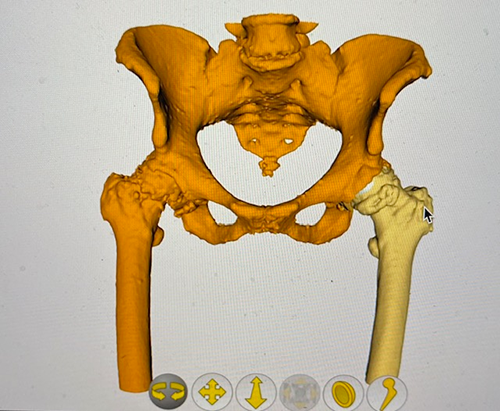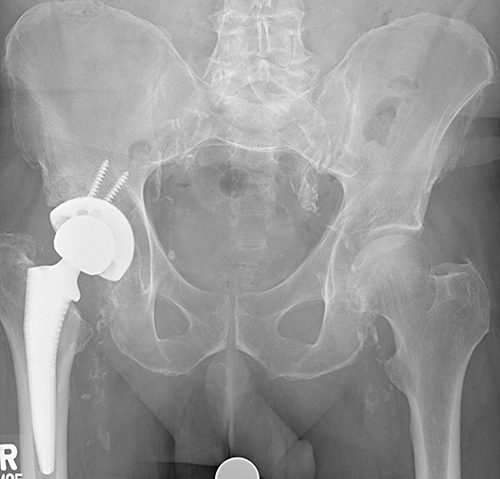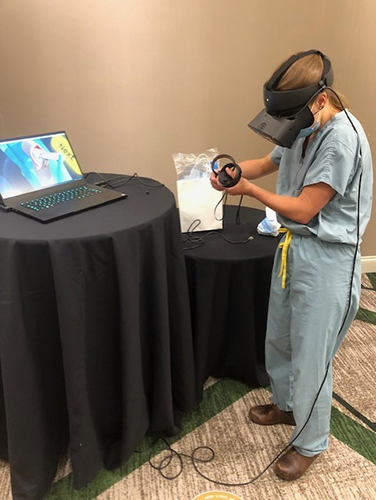 Scott Mabry, M.D.Scott Mabry, M.D., assistant professor in the Department of Orthopaedic Surgery, is utilizing mixed reality technology in total hip replacements.
Scott Mabry, M.D.Scott Mabry, M.D., assistant professor in the Department of Orthopaedic Surgery, is utilizing mixed reality technology in total hip replacements.
Mabry uses this innovative approach during the placement of the acetabular component "socket." This process involves creating a 3D model of the patient's hip based on a CT scan, followed by a preoperative planning session to determine the ideal position for the hip replacement. During surgery, he wears a mixed reality headset, which enables him to overlay the 3D rendering of the patient's pelvis and surgical plan, ensuring precise placement of the implant as planned.
 Example of a standardized planning screen“While this technology can be used in any hip replacement, I have found it most beneficial in patients with complex or unusual anatomy, such as a deformity of their hip or a prior fracture,” said Mabry. “In these situations, you cannot use your normal landmarks in surgery, so the mixed reality helps to overcome that barrier.”
Example of a standardized planning screen“While this technology can be used in any hip replacement, I have found it most beneficial in patients with complex or unusual anatomy, such as a deformity of their hip or a prior fracture,” said Mabry. “In these situations, you cannot use your normal landmarks in surgery, so the mixed reality helps to overcome that barrier.”
Mabry shared that patients who have undergone mixed reality total hip replacements have shown outcomes comparable to those undergoing traditional procedures, with notable improvements in weight-bearing capabilities for individuals with previous fractures.
Not only is the use of mixed reality transforming Mabry’s surgeries, but it is also transforming education in the Department of Orthopaedic Surgery.
 Mixed Reality used to prepare a new hemispherical socket and implant the total hip“I think the next iteration of virtual reality in medical student and resident education is simulating hospital or operating room scenarios and evaluating how the learner responds and performs the required task,” said Mabry.
Mixed Reality used to prepare a new hemispherical socket and implant the total hip“I think the next iteration of virtual reality in medical student and resident education is simulating hospital or operating room scenarios and evaluating how the learner responds and performs the required task,” said Mabry.
In orthopaedic education, virtual reality can prepare surgeons for procedures. Instead of relying solely on reading technique guides and practicing on cadavers or sawbones, trainees can now immerse themselves in a virtual operating room.
 Virtual reality used in resident education“With the implementation of virtual reality, you may now enter a virtual operating room and simulate a surgery using a new technique or implant,” said Mabry. “This is helpful to build familiarity with the steps of the procedure and muscle memory.”
Virtual reality used in resident education“With the implementation of virtual reality, you may now enter a virtual operating room and simulate a surgery using a new technique or implant,” said Mabry. “This is helpful to build familiarity with the steps of the procedure and muscle memory.”
Mabry envisions this adaptive simulation model will contribute to the development of highly skilled and confident medical professionals, better equipping them to handle real-world challenges.